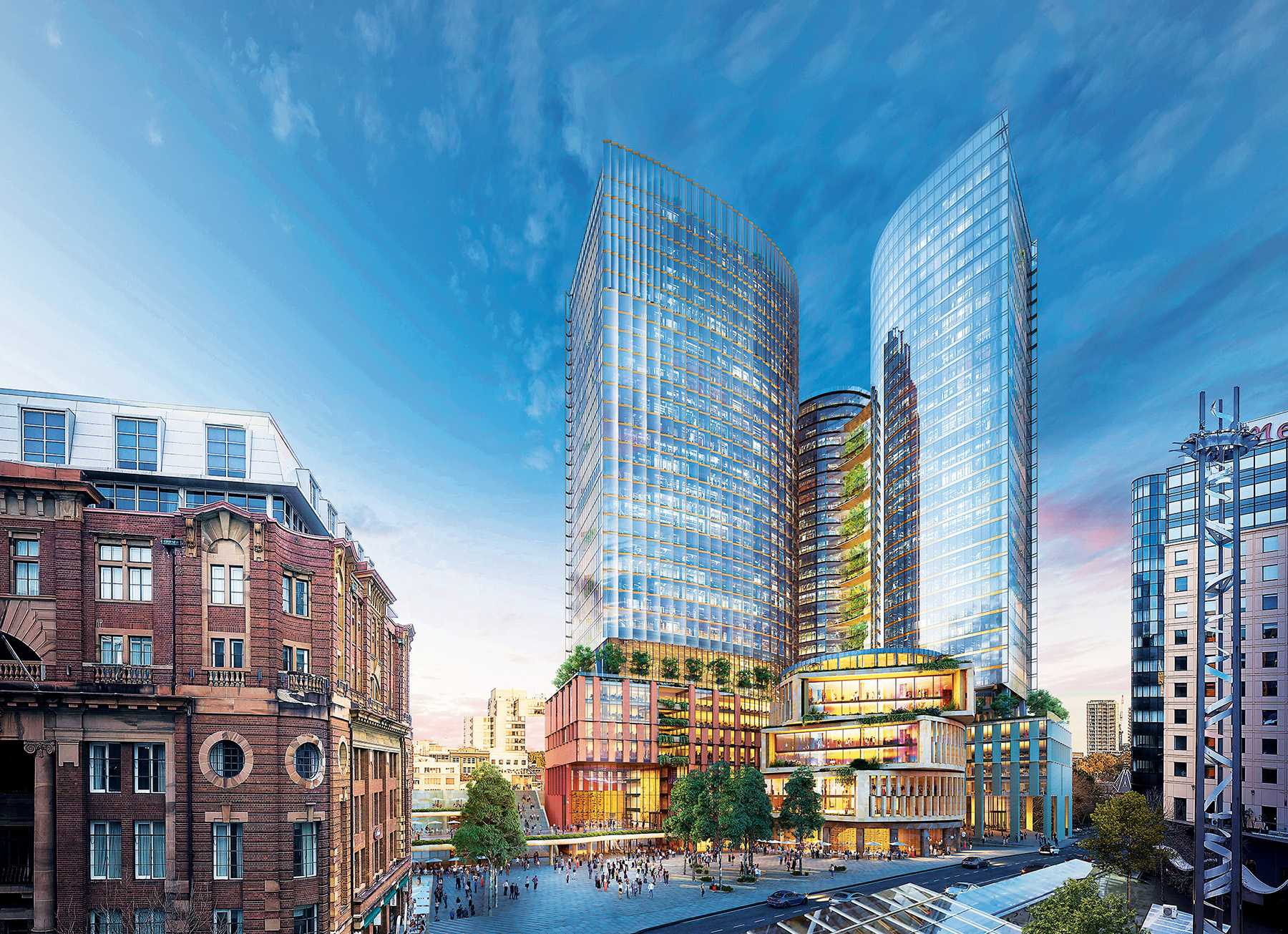
In a bid to regenerate its central business district, Sydney is creating a Tech Central precinct. Located adjacent to the city’s busy Central Station rail depot, the precinct will be home to a new innovation and technology community that is expected to be the biggest technology hub of its kind in Australia, according to Stuart Ayres, MP, the New South Wales Minister for Jobs, Investment, Tourism, and Western Sydney. As part of this redevelopment, global architecture, engineering, and urban planning firm SOM and international design firm Fender Katsalidis have announced the design of three buildings — two high-rise and one low-rise — that will be located along the western edge of Central Station’s rail yard, within the new precinct.
Known as Central Place Sydney, the three-building design will create a new civic space within the existing city. The civic space will be defined by its buildings and activated at its edges by retail, according to Mark Curzon, a design director in Fender Katsalidis’ Sydney office. It will include about 150,000 sq m of office and retail space and be a sustainable commercial development closely tied to nature, according to material distributed by SOM.
The two commercial towers will be 37 and 39 stories and anchored by the low-rise building that will sit between them at the southern edge of the existing Henry Deane Plaza. “It’s exciting to have the opportunity to weave a preexisting civic space into our buildings,” says Scott Duncan, AIA, LEED AP, a design partner in SOM’s Chicago office. “The design for Central Place Sydney reactivates an underleveraged civic space that extends into the workplace — blurring the lines between work and play (and) creating a place that changes throughout the day.
“We wanted the project to be both an iconic addition to the city skyline as well as compatible with everyday life at the human scale. We wanted the overall experience of space to be varied yet aesthetically cohesive and complementary.”
Designed to be a landmark that will revitalize the street level, the eight-story low-rise building will appear as a set of three stacked, offset volumes atop a ground-level podium. The open space created by these slightly rotated tiers will be used as garden terraces. “The pandemic has shown us that a radical rethinking in the roles of health, wellness, and fresh air in particular needs to be at the forefront of future architectural design and planning practices,” Duncan says.
The ground floor of the low-rise building will be street-level retail, but its upper floors will be linked to the new towers’ podiums to create “campus-style” floor plates, according to material distributed by SOM. “The building podiums are intentionally distinct from the towers, providing a sense of enclosure and evoking the movement of commuters bustling through the district on their way to the station,” Duncan says. “By making the ground floor highly permeable and responsive to the existing streetscape, the retail experience can integrate more seamlessly with the plaza and towers above.”
Within the towers, each floor has been designed as a unique “neighborhood” with connected amenities such as naturally ventilated winter gardens and indoor-outdoor atria for the tenants to enjoy. The workspaces within all three buildings have also been designed with flexibility in mind. Expansions within and between floors to accommodate companies’ growth is possible, and this level of adaptability will be particularly important to the fast-moving world of the tech sector, according to Duncan.
The buildings will have operable windows for natural ventilation and an automated-facade system that employs artificial intelligence to determine when to shade the interiors from direct sunlight to reduce heat gain. The buildings will be shaped to mitigate the force of wind while admitting natural light so that they can operate as “breathable” buildings, according to SOM.
This article first appeared in the November 2020 issue of Civil Engineering as "Central Place Sydney to Create New Civic Center for Australian City."



